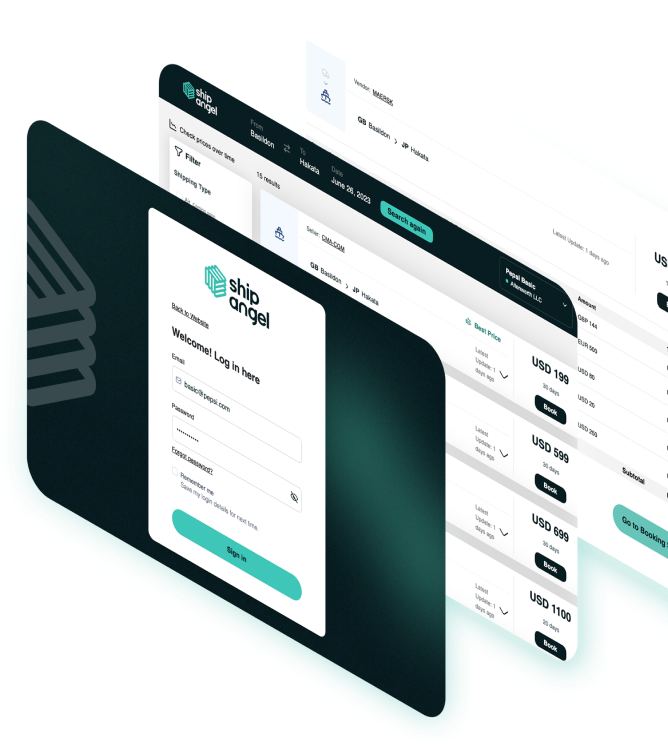-2.png)
Why Supply Chain Index-Linked Contracts May Be Good or Bad
Interest in index-linked contracts is on the rise as shippers seek to mitigate risks associated with price volatility. These contracts, which tie pricing to external indices such as commodity prices, inflation rates, or transportation rates, offer a structured approach to cost adjustments over time. However, while they present advantages in promoting transparency and reducing uncertainty, they also introduce potential drawbacks that can affect profitability, predictability, and contractual stability.
The Advantages of Index-Linked Contracts
One of the primary benefits of index-linked contracts is their ability to protect shippers from fluctuations in rates and prices. In industries where raw materials, fuel, or labor costs experience frequent and unpredictable changes, these contracts ensure that pricing remains fair and reflects real-time market conditions. For example, a manufacturing company reliant on steel can avoid losses due to unexpected price hikes if its contract allows cost adjustments based on a steel price index.
Index-linked contracts also promote transparency between carriers and shippers by linking price adjustments to objective, publicly available indices. This reduces the likelihood of disputes over pricing changes and fosters trust between parties. Instead of arbitrary renegotiations, all stakeholders can clearly understand the mechanisms governing price adjustments, leading to more equitable transactions.
By incorporating external pricing indices, shippers and suppliers can engage in more effective long-term planning and budgeting. Shippers are able to forecast costs with greater accuracy and make strategic decisions regarding inventory, production, and investment.
Index-linked contracts can also offer protection for both carriers and shippers. Carriers benefit from guaranteed price adjustments that prevent them from operating at a loss when input costs rise. Shippers, on the other hand, avoid sudden cost spikes that could result from unpredictable market shifts. This balanced approach ensures that neither party is disproportionately burdened by external economic factors.
Disadvantages of Index-Linked Contracts
While index-linked contracts can protect against price spikes, they can also lead to increased costs if the referenced index rises unexpectedly. Shippers that sign contracts without assessing historical trends may find themselves paying significantly higher rates over time, potentially eroding profitability.
Additionally, managing index-linked contracts can be complex, particularly when multiple indices are involved. Shippers must continuously monitor and interpret data from relevant indices, ensuring that adjustments are correctly calculated and implemented. This often requires additional administrative effort and expertise.
While index-linked contracts provide fairness, they can also reduce cost predictability. Fixed-price contracts allow shippers to set budgets with certainty, whereas index-linked contracts introduce variability that can complicate financial planning.
Another potential downside of index-linked contracts is the risk of selecting an inappropriate or manipulated index. Some indices may not accurately reflect real cost changes in a particular industry or region.
Frequent index-based price adjustments can also create instability in supplier relationships. If prices fluctuate too often, shippers may struggle to manage cash flow, leading to strained carrier-shipper relationships. Frequent changes in pricing can also make it challenging to maintain stable pricing for end customers, potentially impacting competitiveness.
Strategies for Mitigating Risks in Index-Linked Contracts
1. Select the Right Index - Shippers should choose an index that accurately reflects their cost structures. This may involve selecting a blend of multiple indices to create a balanced pricing mechanism. Researching historical trends and volatility levels of different indices can help in making an informed decision.
2. Setting Reasonable Adjustment Intervals - Rather than allowing constant price changes, shippers can establish predefined intervals for price adjustments, such as quarterly or biannually. This reduces unpredictability and enables better financial planning while still allowing adjustments to reflect market realities.
3. Setting Maximum and Minimum Limits - To prevent extreme price swings, contracts can include maximum and minimum limits on price adjustments. This ensures that while pricing remains fair, neither party faces excessive financial burdens due to extreme market conditions.
Index-linked contracts offer both advantages and disadvantages. They provide essential benefits such as risk mitigation, transparency, and long-term stability, particularly in industries with high price volatility. However, they also introduce challenges, including increased costs, complexity in contract management, and reduced predictability.
Ultimately, the effectiveness of index-linked contracts depends on how well they are structured and managed. Shippers that select appropriate indices, set reasonable adjustment mechanisms, and employ risk mitigation strategies can harness the advantages of these contracts while minimizing their drawbacks. Therefore, rather than viewing index-linked contracts as inherently good or bad, companies should evaluate their unique circumstances before adopting them as a strategic procurement tool.
About Ship Angel
Ship Angel is a cutting-edge rate management platform for BCO shippers, offering innovative solutions in rate management, amendment guard, invoice auditing, and sustainability reporting. Powered by AI, Ship Angel helps shippers manage rates efficiently, ensure contract accuracy, and optimize cost savings. With a commitment to transparency, Ship Angel works across industries to help companies avoid costly disruptions and stay ahead in a rapidly evolving global trade environment.
Want to Ensure a Smooth Supply Chain?
 Graham Parker
Graham Parker
 March 21, 2025
March 21, 2025

